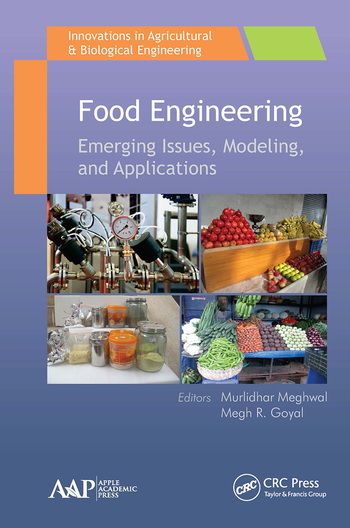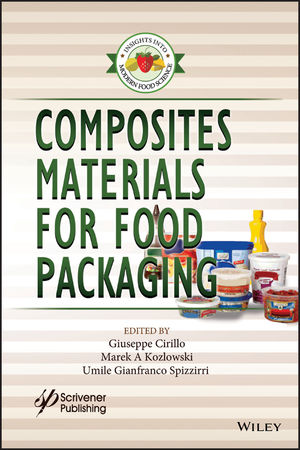PLA cup sidelines big oil
Functionality issues dogged plant-based plastic resins when they debuted, but product development is gradually overcoming them.

One by one, package suppliers and converters are overcoming the limitations of plant-based plastics and, in the process, firmly guiding a material regarded as a novelty nine years ago into a mainstream material option.
Polylactic acid (PLA), the resin made from cornstarch, had more negatives than positives when Dow Chemical and Cargill formed NatureWorks PLA in 2001 to produce and market the material. High clarity and a glossy look won trials from a European maker of hard candies and consumer-electronics manufacturers such as Sony, but functional limitations worked against PLA’s use for most foods. PLA was a poor moisture and oxygen barrier. It could not tolerate high temperatures, and the material’s brittleness limited high-speed forming possibilities.
International Paper addressed the temperature issue four years ago, developing a crystallization process that allowed paper cups lined with PLA to withstand temperatures up to 185°F. The higher heat tolerance permitted Green Mountain Coffee Roasters to introduce “ecotainer,” a foodservice coffee cup in which PLA replaced a petroleum-based liner.
Now, engineers at Clear Lam Packaging Inc. have formulated PLA that is flexible enough to run through an Arcil form/fill/seal (f/f/s) machine. In October, Stonyfield Farm completed conversion from polystyrene to PLA for all its multipacks of yogurt, a switch that not only boosts the organic dairy’s sustainability claims but also improves performance by reducing breakage during shipping. PLA provides better protection than polystyrene against oxygen, according to Roman Forowycz, chief marketing officer at Clear Lam, even without nanocoating for hermetic protection.
“This new yogurt cup is something we’ve been working to achieve for years,” says Stonyfield’s Nancy Hirshberg, vice president of natural resources. “As this new type of plastic becomes commonplace, the potential environmental benefits only get better.”
Because there are only two centers in the United States where PLA packaging can be processed for other uses, no claims about recyclability are made by Stonyfield. “Compostable and recyclable claims are frowned on by greenpackaging.com,” a retailer-driven initiative that tracks sustainable packaging claims, says Forowycz. “Two years ago, greenwashing in packaging was horrendous. It’s toned down, but it’s still out there.” While the recovery rate for PET bottles and some other plastic containers is trending up, only 1.4 percent of PET trays and other plastic packages are recovered and reused, he adds.
Stonyfield used HDPE containers until the early 1990s, when the dairy switched to polypropylene because it is lighter. Material reduction also drove a switch to multipacks from a vertical f/f/s in 2003, when the company switched to foil instead of plastic lids to reduce energy inputs. Before making the latest change, Stonyfield commissioned a lifecycle assessment by the University of California at Santa Barbara. The study determined that PLA uses less energy to produce and cuts carbon release by 48 percent over polystyrene. The new containers will cut Stonyfield’s annual CO2 emissions by 1,875 metric tons.
While most of Elk Grove Village, IL-based Clear Lam’s production is dependent on petroleum-based resins, renewable raw materials have grown to 25 percent of total throughput, notes Forowycz.
For more information: Roman Forowycz, Clear Lam Packaging Inc., 847-439-8570, rforowycz@clearlam.com

StonyField Farm’s complete line of multipack yogurt cups, including YoBaby and YoToddler yogurt, converted by mid-October to plastic made from plant-based polylactic acid resins. Source: Clear Lam Packaging Inc.
One by one, package suppliers and converters are overcoming the limitations of plant-based plastics and, in the process, firmly guiding a material regarded as a novelty nine years ago into a mainstream material option.
Polylactic acid (PLA), the resin made from cornstarch, had more negatives than positives when Dow Chemical and Cargill formed NatureWorks PLA in 2001 to produce and market the material. High clarity and a glossy look won trials from a European maker of hard candies and consumer-electronics manufacturers such as Sony, but functional limitations worked against PLA’s use for most foods. PLA was a poor moisture and oxygen barrier. It could not tolerate high temperatures, and the material’s brittleness limited high-speed forming possibilities.
International Paper addressed the temperature issue four years ago, developing a crystallization process that allowed paper cups lined with PLA to withstand temperatures up to 185°F. The higher heat tolerance permitted Green Mountain Coffee Roasters to introduce “ecotainer,” a foodservice coffee cup in which PLA replaced a petroleum-based liner.
Now, engineers at Clear Lam Packaging Inc. have formulated PLA that is flexible enough to run through an Arcil form/fill/seal (f/f/s) machine. In October, Stonyfield Farm completed conversion from polystyrene to PLA for all its multipacks of yogurt, a switch that not only boosts the organic dairy’s sustainability claims but also improves performance by reducing breakage during shipping. PLA provides better protection than polystyrene against oxygen, according to Roman Forowycz, chief marketing officer at Clear Lam, even without nanocoating for hermetic protection.
“This new yogurt cup is something we’ve been working to achieve for years,” says Stonyfield’s Nancy Hirshberg, vice president of natural resources. “As this new type of plastic becomes commonplace, the potential environmental benefits only get better.”
Because there are only two centers in the United States where PLA packaging can be processed for other uses, no claims about recyclability are made by Stonyfield. “Compostable and recyclable claims are frowned on by greenpackaging.com,” a retailer-driven initiative that tracks sustainable packaging claims, says Forowycz. “Two years ago, greenwashing in packaging was horrendous. It’s toned down, but it’s still out there.” While the recovery rate for PET bottles and some other plastic containers is trending up, only 1.4 percent of PET trays and other plastic packages are recovered and reused, he adds.
Stonyfield used HDPE containers until the early 1990s, when the dairy switched to polypropylene because it is lighter. Material reduction also drove a switch to multipacks from a vertical f/f/s in 2003, when the company switched to foil instead of plastic lids to reduce energy inputs. Before making the latest change, Stonyfield commissioned a lifecycle assessment by the University of California at Santa Barbara. The study determined that PLA uses less energy to produce and cuts carbon release by 48 percent over polystyrene. The new containers will cut Stonyfield’s annual CO2 emissions by 1,875 metric tons.
While most of Elk Grove Village, IL-based Clear Lam’s production is dependent on petroleum-based resins, renewable raw materials have grown to 25 percent of total throughput, notes Forowycz.
For more information: Roman Forowycz, Clear Lam Packaging Inc., 847-439-8570, rforowycz@clearlam.com
Looking for a reprint of this article?
From high-res PDFs to custom plaques, order your copy today!







